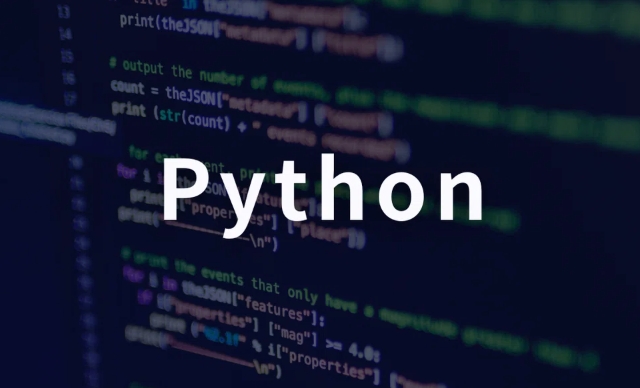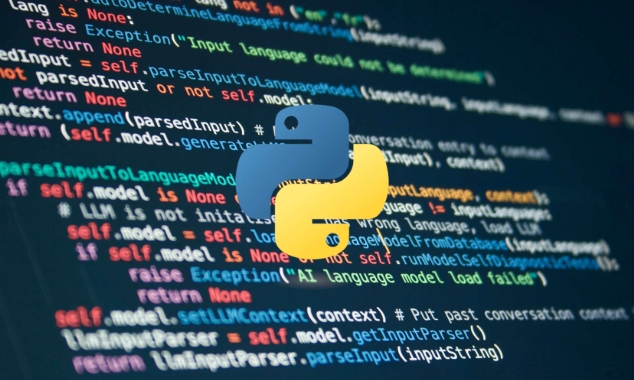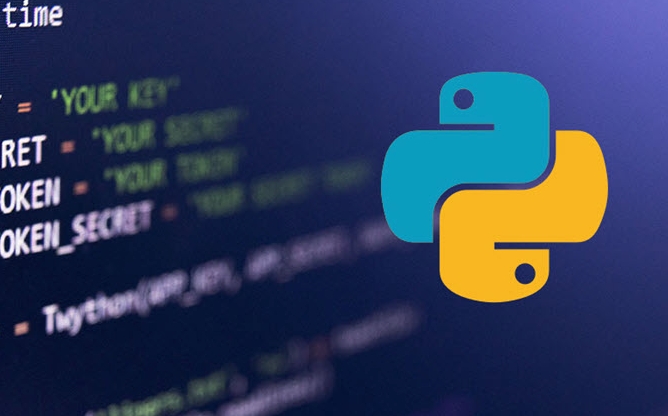The key to writing Python's if else statements is clear logic and concise code. 1. Split complex conditions into variables or functions to improve readability and maintainability; 2. Use elif to replace multiple independent ifs to avoid repeated judgments and logical conflicts; 3. Use ternary operators to simplify simple judgments, but avoid abuse; 4. Avoid redundant else branches and keep the code concise. These practices can effectively improve the quality and readability of the code.

Writing Python's if else statement is not just correct syntax. The key is to make the logic clear and the code concise, so that others can understand it at first sight, and you won’t have a headache when you look back in the future. The following practices are all "safe" methods that are often used in actual projects.

Keep the conditions and judgment concise and clear
Complex judgments of conditions are the most likely to make people dizzy. If you wrote:
if (x > 0 and y < 10) or (z == None and not flag):
It would be very difficult to read. It is recommended to split it into variables or functions to express the intention, such as:

is_valid_position = x > 0 and y < 10 is_missing_data = z is None and not flag if is_valid_position or is_missing_data:
This not only makes the logic clear, but also facilitates subsequent modification and testing.
In addition, try to avoid if else nesting too many layers. If more than two layers, refactoring should be considered, such as early return or extracting into functions.

Use elif instead of multiple independent if
When there are multiple mutually exclusive conditions, many people will write it like this:
if score >= 90:
grade = 'A'
if score >= 80:
grade = 'B'
if score >= 70:
grade = 'C' But this is problematic because every judgment will be executed once. The correct way is to use elif :
if score >= 90:
grade = 'A'
elif score >= 80:
grade = 'B'
elif score >= 70:
grade = 'C'
else:
grade = 'D'This way, the logic is clearer, the efficiency is higher, and there will be no problem that multiple conditions take effect at the same time.
Simplify simple judgment using ternary operators
For very simple judgments, you can use a ternary expression to do it in one line:
result = "pass" if score >= 60 else "fail"
This writing method is more compact and easy to understand than writing four lines of if else . But don’t abuse it. It’s better to write the complete structure of too complicated logic honestly.
Avoid redundant else branches
Sometimes we will unconsciously write code like this:
if condition:
do_something()
else:
pass At this time, it can be simplified to retain only if :
if condition:
do_something() By the same token, if the default value is returned in else , it can also be placed directly outside:
def get_status(user):
if user.is_active:
return "active"
return "inactive" It's refreshing than writing a full if-else .
Basically these common and practical practices. Not every situation applies, but it can make your if else cleaner and easier to maintain most of the time.
The above is the detailed content of python if else best practices. For more information, please follow other related articles on the PHP Chinese website!

Hot AI Tools

Undress AI Tool
Undress images for free

Undresser.AI Undress
AI-powered app for creating realistic nude photos

AI Clothes Remover
Online AI tool for removing clothes from photos.

Clothoff.io
AI clothes remover

Video Face Swap
Swap faces in any video effortlessly with our completely free AI face swap tool!

Hot Article

Hot Tools

Notepad++7.3.1
Easy-to-use and free code editor

SublimeText3 Chinese version
Chinese version, very easy to use

Zend Studio 13.0.1
Powerful PHP integrated development environment

Dreamweaver CS6
Visual web development tools

SublimeText3 Mac version
God-level code editing software (SublimeText3)

Hot Topics
 Selecting Specific Columns | Performance Optimization
Jun 27, 2025 pm 05:46 PM
Selecting Specific Columns | Performance Optimization
Jun 27, 2025 pm 05:46 PM
Selectingonlyneededcolumnsimprovesperformancebyreducingresourceusage.1.Fetchingallcolumnsincreasesmemory,network,andprocessingoverhead.2.Unnecessarydataretrievalpreventseffectiveindexuse,raisesdiskI/O,andslowsqueryexecution.3.Tooptimize,identifyrequi
 What is the `enum` type in Java?
Jul 02, 2025 am 01:31 AM
What is the `enum` type in Java?
Jul 02, 2025 am 01:31 AM
Enums in Java are special classes that represent fixed number of constant values. 1. Use the enum keyword definition; 2. Each enum value is a public static final instance of the enum type; 3. It can include fields, constructors and methods to add behavior to each constant; 4. It can be used in switch statements, supports direct comparison, and provides built-in methods such as name(), ordinal(), values() and valueOf(); 5. Enumeration can improve the type safety, readability and flexibility of the code, and is suitable for limited collection scenarios such as status codes, colors or week.
 Applying Semantic Structure with article, section, and aside in HTML
Jul 05, 2025 am 02:03 AM
Applying Semantic Structure with article, section, and aside in HTML
Jul 05, 2025 am 02:03 AM
The rational use of semantic tags in HTML can improve page structure clarity, accessibility and SEO effects. 1. Used for independent content blocks, such as blog posts or comments, it must be self-contained; 2. Used for classification related content, usually including titles, and is suitable for different modules of the page; 3. Used for auxiliary information related to the main content but not core, such as sidebar recommendations or author profiles. In actual development, labels should be combined and other, avoid excessive nesting, keep the structure simple, and verify the rationality of the structure through developer tools.
 What is the JDK?
Jun 25, 2025 pm 04:05 PM
What is the JDK?
Jun 25, 2025 pm 04:05 PM
JDK (JavaDevelopmentKit) is a software development environment for developing Java applications and applets. It contains tools and libraries required to compile, debug and run Java programs. Its core components include Java compiler (javac), Java runtime environment (JRE), Java interpreter (java), debugger (jdb), document generation tools (javadoc) and packaging tools (such as jar and jmod). Developers need JDK to write, compile Java code and develop with the help of IDE; without JDK, Java applications cannot be built or modified. You can enter javac-version and java-version in the terminal
 VSCode debugger for Java setup guide
Jul 01, 2025 am 12:22 AM
VSCode debugger for Java setup guide
Jul 01, 2025 am 12:22 AM
The key steps in configuring the Java debugging environment on VSCode include: 1. Install JDK and verify; 2. Install JavaExtensionPack and DebuggerforJava plug-in; 3. Create and configure the launch.json file, specify mainClass and projectName; 4. Set up the correct project structure to ensure the source code path and compilation output are correct; 5. Use debugging techniques such as Watch, F8/F10/F11 shortcut keys and methods to deal with common problems such as class not found or JVM attachment failure.
 What is recursion, and how does it work?
Jun 25, 2025 am 12:59 AM
What is recursion, and how does it work?
Jun 25, 2025 am 12:59 AM
Recursion is a programming method for function calls itself, suitable for tasks that can be decomposed into smaller similar subproblems. 1. Recursion solves the problem by constantly simplifying the problem until it reaches a "base example" that no longer needs to be recursive; 2. Each recursive call will be pushed into the call stack, and if it does not approach the base case, it may cause stack overflow; 3. Common applications include tree traversal, division and conquer algorithm, backtracking problems and mathematical sequence generation; 4. When writing recursive functions, you need to clarify the base case, ensure that each call is close to the base case, avoid repeated calculations, and pay attention to stack limitations; 5. Compared with iteration, recursive code is simpler but may be less efficient, and should be selected according to structure, performance and memory requirements.
 How do I set up VS Code for Java development?
Jun 29, 2025 am 12:23 AM
How do I set up VS Code for Java development?
Jun 29, 2025 am 12:23 AM
To use VSCode for Java development, you need to install the necessary extensions, configure the JDK and set up the workspace. 1. Install JavaExtensionPack, including language support, debugging integration, build tools and code completion functions; optional JavaTestRunner or SpringBoot extension package. 2. Install at least JDK17 and verify through java-version and javac-version; set the JAVA_HOME environment variable, or switch multiple JDKs in the status bar at the bottom of VSCode. 3. After opening the project folder, make sure the project structure is correct and enable automatic saving, adjust the formatting rules, enable code checking, and configure the compilation task to optimize the opening.
 Windows search bar not typing
Jul 02, 2025 am 10:55 AM
Windows search bar not typing
Jul 02, 2025 am 10:55 AM
When the Windows search bar cannot enter text, common solutions are: 1. Restart the Explorer or computer, open the Task Manager to restart the "Windows Explorer" process, or restart the device directly; 2. Switch or uninstall the input method, try to use the English input method or Microsoft's own input method to eliminate third-party input method conflicts; 3. Run the system file check tool, execute the sfc/scannow command in the command prompt to repair the system files; 4. Reset or rebuild the search index, and rebuild it through the "Index Options" in the "Control Panel". Usually, we start with simple steps first, and most problems can be solved step by step.






